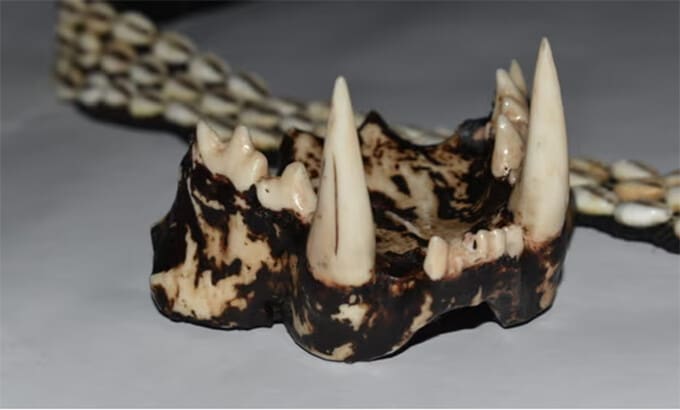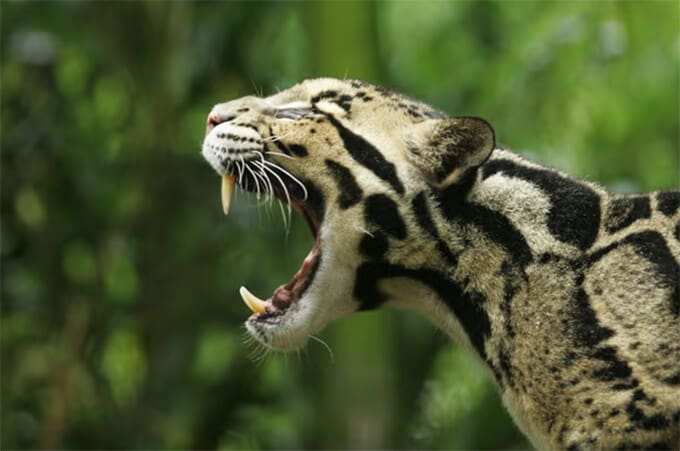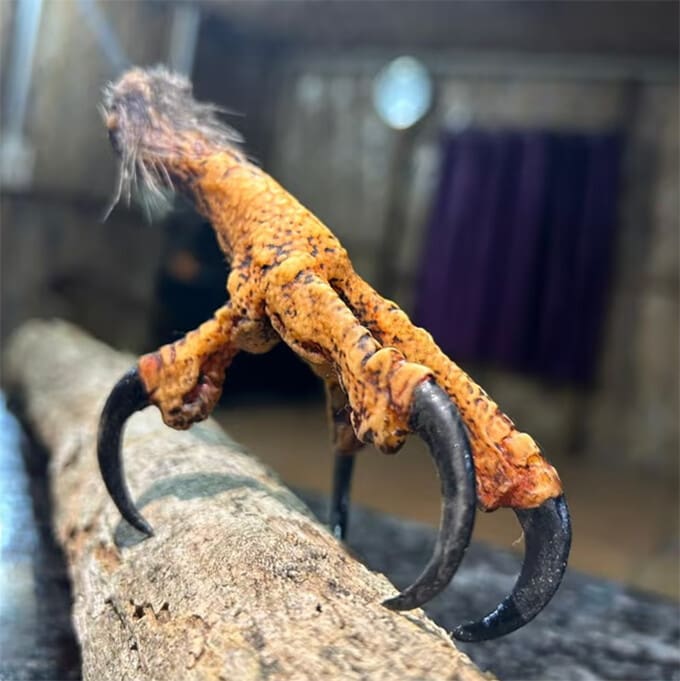On August 2, 2023, a startup succeeded in providing an alternative to the use of wild animal parts in traditional headwear for indigenous Indians.

△Arunachal Ivory and ornament startup, has made more than 100 3D replicas of clouded leopard fangs.The replicas will be used in the traditional machetes of Indian Arunachal Pradesh tribes,which often use designs containing animal jaws
Rare animal replica segment market
The company focuses on making replicas for Arunachal Pradesh in northeastern India, home to tigers, clouded leopards, eagles and hornbills in lowland rainforests.The area is also home to the Nish community, the largest indigenous tribe in the state, whose men traditionally wear a hand-woven rattan cap called the byopa, topped with a large hornbill's upper beak and armor, as well as eagle caps and animal claws.These decorations symbolize domination of the jungle and domination of the sky and are considered status symbols.

△Some traditional customs involve stealing large numbers of clouded leopards
However, with the decline of wildlife populations, hunting rare animals and using their body parts to make headwear has become a problem.So Nabam Bapu, an entrepreneur from Papum Pare district, started thinking about alternatives.In January 2020, he teamed up with technology innovator Anang Tadar to successfully replicate animal parts using-3D printing technology,providing an alternative to traditional headwear.
This innovation can solve the problem of hunting rare animals and meet the cultural needs of indigenous peoples.By using 3D printing technology, they were able to create replicas of real animal parts for those who wish to wear headgear.This not only protects wildlife, but also maintains the integrity of the traditional culture of the Nish community.
This innovation has attracted widespread attention and recognition in the field of professional 3D printing.Tadar said: "It took us two years to source the raw materials for this product, including a range of synthetic resins, plastic materials, wood and fire-resistant glass.We are also exploring the use of plant-based, environmentally friendly resins."

△Anang Tadar (left), technical advisor of Ivory and Ornaments, and Likha Nana and Nabam Bapu, founders of the company
Save wildlife and restore cultural practices
The Indian case is just one of many around the world using 3D printing technology to protect wildlife.In southern Africa, feral cat conservation charity Panthera launched Furs for Life in 2013, using synthetic materials to produce leopard-skin cloaks, which are used by followers of Shembe, South Africa's largest indigenous church, in place of real leopard skin.The charity estimates that the project has reduced the use of real leopard skin in cloaks by 50%.
In Arunachal Pradesh, Bhapu and Tadar trekked miles of dirt roads each month to bring the latest samples to village elders for consultation."It is important to have the village elders check their quality because only they can properly assess whether they are close to the real animal parts because they have been hunting for years," Tadar said.
Bapu co-founded the startup Ivory and Ornaments with history researcher Likha Nana, who is also his wife.To date, the company has made more than 100 replicas of the milky teeth of clouded leopards and tigers, as well as the teeth of wild pigs and the neon yellow claws of eagles.They are currently working on 3D printing of hornbill beaks in India.

△ A replica of an eagle's claw is considered a symbolic part of the headdress traditionally worn by men in the Nish community
Can 3D printing protect these endangered animals?
Arunachal Pradesh is home to 26 major tribes, including the Nish, Adi, Gallo, Apatani and Takin.Fearing that their culture and traditional customs are fading, the Arunachal Pradesh government encourages students to wear traditional clothes every Friday and government workers to wear them once a month.As a result, the demand for wildlife parts remains high.
While authorities are trying to crack down on poaching and the global illegal wildlife trade (the country borders Myanmar to the east and China to the north), Tana Tapi, deputy chief wildlife warden, says in Arunachal Pradesh , monitoring poaching activity can be a daunting task
Arunachal Ivory and jewelry companies want to play their part in the fight against this illegal trade.Rajkamal Goswami, a researcher who has worked on conservation in northeast India for a decade, said the success of 3D printing technologies will depend on how local communities adopt them.Entrepreneurs should work to convince local influential institutions to adopt such products to truly change the scope and intensity of hunting.
Bapu is convinced his company can make a difference.He said: "If people are mercilessly shooting wildlife with high-tech guns, why not use the technology for a greater purpose?Save wildlife and restore traditional cultural practices."
Source: 南極熊










